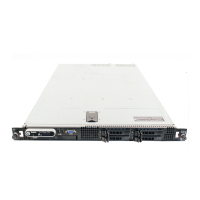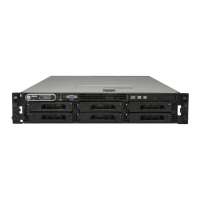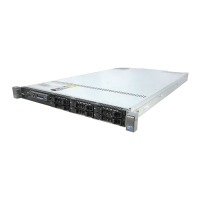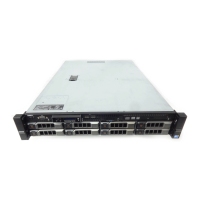10 Four-Post Rack Installation
Installation Tasks
Installing a rack kit involves performing the following tasks (described in detail in subsequent sections)
in their numbered order:
1
Removing the rack doors
2
Marking the rack
3
Configuring the sliding rail assemblies (sliding rail kits only)
4
Installing chassis static rail modules (static rail kits only)
5
Installing the mounting rails in the rack
6
Installing the system in the rack
7
Installing the tray and cable-management arm (sliding rail kits only)
8
Routing cables
9
Replacing the rack doors
Removing the Rack Doors
See the procedures for removing doors in the documentation provided with your rack cabinet.
CAUTION: Because of the size and weight of the rack cabinet doors, never attempt to remove or install them
by yourself.
CAUTION: Store the two doors where they will not injure someone if the doors accidently fall over.
Marking the Rack
For a 1-U system, you must allow 1 U (44 mm, or 1.75 inches) of vertical space for each system you install
in the rack.
Rack cabinets that meet EIA-310 standards have an alternating pattern of three holes per rack unit with
center-to-center hole spacing (beginning at the top hole of a 1-U space) of 15.9 mm, 15.9 mm, and 12.7 mm
(0.625 inch, 0.625 inch, and 0.5 inch) for the front and back vertical rails (see Figure 1-3). Rack cabinets may
have round or square holes.
NOTE: The vertical rails may be marked by horizontal lines and numbers in 1-U increments. If you want, you can
make a note of the number marking on the rack’s vertical rail. It is not necessary to mark or place tape on the rack.

